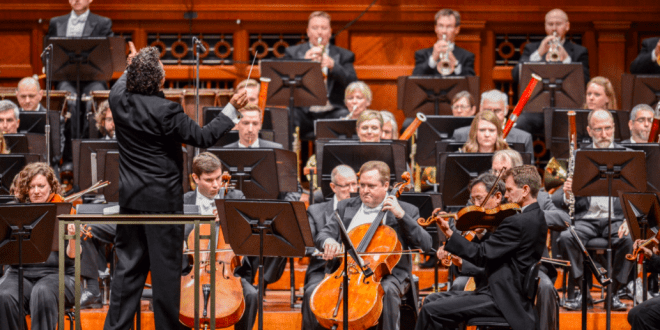The Nashville Symphony’s Aegis Sciences Classical Series returns on March 8-10 to perform the Fifth Symphony of Gustav Mahler, a personal favorite of Symphony music director Giancarlo Guerrero, while renowned violinist Jennifer Koh returns to the Schermerhorn to join the orchestra for Esa-Pekka Salonen’s Violin Concerto. Here’s everything you need to know about the composers and works being featured this weekend!
- Currently serving a three-year term as a composer-in-residence with the New York Philharmonic, Esa-Pekka Salonen is part of a pioneering generation of contemporary composers in his native Finland, where he studied at the Sibelius Academy. The Violin Concerto is one of his most frequently performed works, receiving the prestigious Grawemeyer Award in Music in 2012.
- Like Gustav Mahler during his own lifetime, Salonen has established a high profile as a conductor — most notably serving as music director of the Los Angeles Philharmonic — but he is also a distinctive and original composer as well.
- The composer originally wrote the piece for violinist Leila Josefowicz, who played a collaborative role in its creation. “As a result of that process,” he writes, “this Concerto is as much a portrait of her as it is my more private narrative, a kind of summary of my experiences as a musician and a human being at the watershed age of 50.”
- Written in four movements, each of which captures a distinct mood or feeling, the work closes on a chord unlike any other in the piece, while the violin holds out a soaring high note. “When I had written the very last chord of the piece,” Salonen writes, “I felt confused: why does the last chord — and only that — sound completely different from all other harmony of the piece? As if it belonged to a different composition. Now I believe I have the answer. That chord is a beginning of something new.”
- Mahler wrote his Fifth Symphony shortly after experiencing a life-threatening hemorrhage and also while he was in the midst of his courtship with Alma Schindler, whom he married in the spring of 1902. He completed the work that summer — the time of year when he was able to be most prolific, as he was on a break from conducting.
- Conductor Willem Mengelberg, who was a close friend of Mahler’s, claimed that the Adagietto movement was a musical love letter to the composer’s fiancée, Alma. Because of its somber, gentle mood, however, this music has been used as a musical memorial in times of collective grieving, most notably at Robert Kennedy’s 1968 funeral, with Leonard Bernstein leading the New York Philharmonic.
- While Mahler’s previous symphonies incorporated voices or text addressing programmatic elements, his Fifth Symphony is purely instrumental and shows the development of his writing for orchestra. The work is structured in an arch-like design, with two longer parts flanking a shorter middle part, and Mahler connects movements within the piece through common musical ideas.
- His choice of keys, beginning in C-sharp minor and ultimately concluding in D major, is both symbolic of a dark-to-light progression and also shows his disregard for tradition. Standard practice before Mahler was to have a work begin and end in the same key, or at least the relative major or minor key. His choice to break this precedent solidifies his role as a link between the Romantic and Modern eras.
- Tickets on Sale Now!






